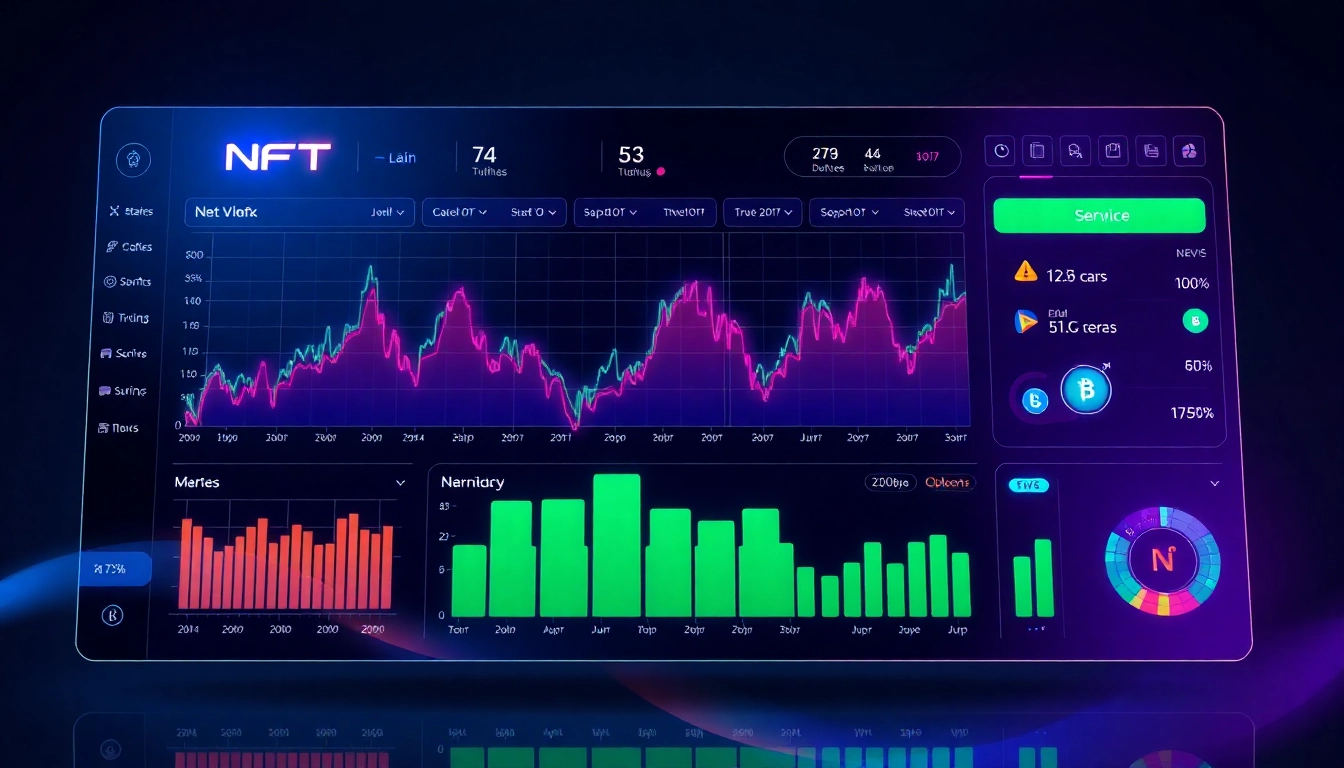Maximizing Your Investment with the UK ISA Guide: A Comprehensive Approach to Financial Growth
In today’s dynamic financial landscape, understanding the nuances of Individual Savings Accounts (ISAs) in the UK is essential for both novice and seasoned investors. As stock markets, commodities, and alternative assets fluctuate, making informed decisions about your ISA investments can significantly enhance your wealth accumulation and retirement planning. The ISA Guide UK offers invaluable insights into how you can leverage ISAs effectively to achieve your financial goals.
1. Understanding the Basics of ISA Investing in the UK
1.1 What Is an ISA and How Does It Work?
An ISA, or Individual Savings Account, is a tax-advantaged savings and investment vehicle available to UK residents. It allows individuals to save or invest up to a certain annual limit (£20,000 for the 2023/2024 tax year) without paying income tax or capital gains tax on the returns. This benefit makes ISAs a compelling choice for building wealth over the long term.
Funds held within an ISA grow free from UK tax, making them an optimal way to maximize investment growth. Whether you prefer cash savings or stock market exposure, ISAs provide a flexible platform that adapts to your evolving financial needs.
1.2 Types of ISAs Available for UK Investors
There are several types of ISAs designed to suit different investment strategies and risk profiles:
- Cash ISA: Similar to a savings account, offering fixed or flexible interest rates, ideal for risk-averse investors.
- Stocks and Shares ISA: Enables investment in stocks, bonds, funds, and ETFs, suitable for investors seeking growth and willing to accept market fluctuations.
- Innovative Finance ISA: Focused on peer-to-peer lending platforms, offering higher interest potential but with increased risk.
- Lifetime ISA (LISA): Designed to help people save for their first home or retirement, with government bonuses on contributions up to £4,000 annually.
Choosing the right type hinges on your financial objectives, risk appetite, and investment horizon.
1.3 Key Benefits of Investing Through an ISA
ISAs provide several advantages that enhance your financial planning:
- Tax-free growth and withdrawals, maximising your returns.
- Flexible options to switch between different ISA types or transfer existing ISAs without losing tax benefits.
- Encouragement to save regularly due to annual contribution limits and tax incentives.
- Accessibility and ease of management through online platforms and investment providers.
As global markets face ongoing volatility—shaped by factors like geopolitical tensions, economic recovery post-pandemic, and interest rate shifts—having a tax-efficient investment plan becomes even more crucial.
2. Choosing the Right ISA for Your Financial Goals
2.1 Assessing Your Risk Tolerance and Investment Horizon
Effective ISA investing begins with a clear understanding of your risk tolerance and time horizon. Younger investors with a longer investment period can afford to take higher risks, favoring stocks and shares ISAs for potential growth. Conversely, those nearing retirement may prioritize stability, leaning toward cash ISAs or less volatile bonds.
Utilizing tools like risk questionnaires or consulting financial advisors can help tailor your portfolio to your comfort level and goals. For example, if you plan to buy a house within five years, a more conservative approach may be advisable, whereas saving for retirement decades away allows for a more aggressive investment mix.
2.2 Comparing Cash ISAs versus Stocks and Shares ISAs
Cash ISAs offer safety and liquidity, making them suitable for emergency funds or short-term savings. However, their lower interest rates often lag behind inflation, eroding real purchasing power if held long-term.
Stocks and Shares ISAs, on the other hand, expose investors to market risks but offer higher growth potential. The recent surge in equity markets, driven by strong Chinese indices, US rate cut bets, and global economic recovery signs, underscores the importance of diversified stocks and sector exposure.
Assess your appetite for growth versus security when selecting between these options. Sometimes, a hybrid approach—allocating funds across both types—can optimize your risk-return profile.
2.3 Factors to Consider Before Opening an ISA Account
Critical considerations include provider reputation, fee structures, investment choices, and transfer policies. Choosing a provider with a robust platform, transparent fee structures, and diverse investment options ensures better control and flexibility over your investments.
Additionally, check whether the provider offers tools for performance tracking, automatic rebalancing, and customer support. Keeping an eye on prevailing economic trends—such as the potential return of gold and precious metals or the legalisation of assets like cannabis—can also inform your investment strategy.
3. Strategies to Maximize ISA Returns in the UK Market
3.1 Effective Portfolio Diversification Tips
Portfolio diversification—spreading investments across sectors, regions, and asset classes—is fundamental to reducing risk. For instance, combining domestic UK stocks with international equities like Asian indices can shield your portfolio from localized downturns. Including commodities such as gold, which recently hit a four-month high amid US rate cut bets, can act as a hedge against inflation and market volatility.
Experts recommend incorporating a mix of growth assets and defensive securities, adjusting allocations periodically to align with market developments and your personal circumstances.
3.2 Timing Your Contributions for Optimal Growth
Timing plays a pivotal role in maximizing returns. For example, making contributions during market dips—such as when bonds come under pressure or during geopolitical tensions—can enhance long-term growth. Regular, disciplined investments—known as pound-cost averaging—help mitigate timing risks, especially in volatile periods following global events like the Covid-19 lull ending or geopolitical shifts in Germany and Florida.
Additionally, understanding tax and policy changes, such as ISA allowance increases or new investment opportunities like inverse bitcoin ETFs in Hong Kong, can provide strategic entry points.
3.3 Utilizing ISAs to Supplement Retirement Savings
ISAs serve as excellent tools to complement pension schemes, offering flexible access and tax benefits. Allocating portions of your savings into ISAs—particularly stocks and shares ISAs—can build wealth outside traditional pension pots, providing liquidity and growth potential for retirement or other life events. Given that 40% of retirees report “retirement regrets,” early ISA planning can mitigate such sentiments by ensuring financial security.
4. Navigating Rules, Regulations, and Contribution Limits
4.1 Annual Contribution Limits and Carry-Forward Options
The ISA allowance for the current tax year stands at £20,000, split across different types based on your strategic preferences. Some providers allow unused allowances to be carried forward within certain limits, but understanding these nuances is essential to optimize your annual contributions. Proactive planning ensures you don’t miss out on tax benefits, especially in a market influenced by rising gold and precious metals or new cryptocurrency ETFs.
4.2 Tax Advantages and Legal Compliance
Staying compliant with UK regulations is crucial. Ensure your investments adhere to regulations, especially when venturing into alternative assets like legal cannabis markets or digital assets such as cryptocurrencies. The recent introduction of laws clarifying digital asset status in the UK emphasizes the importance of legal awareness—an integral part of sustainable investment management.
4.3 Common Pitfalls to Avoid in ISA Investing
Common mistakes include over-concentrating in one asset class, neglecting to review fee structures, or failing to rebalance portfolios. Market fluctuations, like those seen in crypto markets or gold prices, can mislead investors into panic selling or pursuing speculative investments. Regular review and disciplined adherence to a diversified strategy help prevent such pitfalls.
5. Advanced Tips for Experienced ISA Investors in the UK
5.1 Integrating ISAs with Other Investment Vehicles
For seasoned investors, integrating ISAs with other accounts—such as SIPPs, EIS schemes, or international portfolios—can offer tax-efficient growth and estate planning advantages. For example, transferring ISA holdings into a pension or leveraging performance metrics from stocks and shares ISAs can optimize overall returns.
5.2 Monitoring Performance and Rebalancing Strategies
Continuous performance evaluation using industry benchmarks and sector data—like tracking the impact of rising gold prices or declines in bonds—enables timely rebalancing. This proactive management ensures your portfolio adapts to market conditions, such as the recent rise in Asian and European stocks or shifts in policy affecting renewable energy investments.
5.3 Leveraging ISA Transfers and Portability Options
The portability feature allows transferring ISAs between providers without losing tax benefits. This flexibility is vital when considering lower fee structures, better investment choices, or specific market opportunities like inverse bitcoin ETFs or emerging sectors. Properly managing transfers can also help sidestep pitfalls associated with outdated or high-cost investments.



